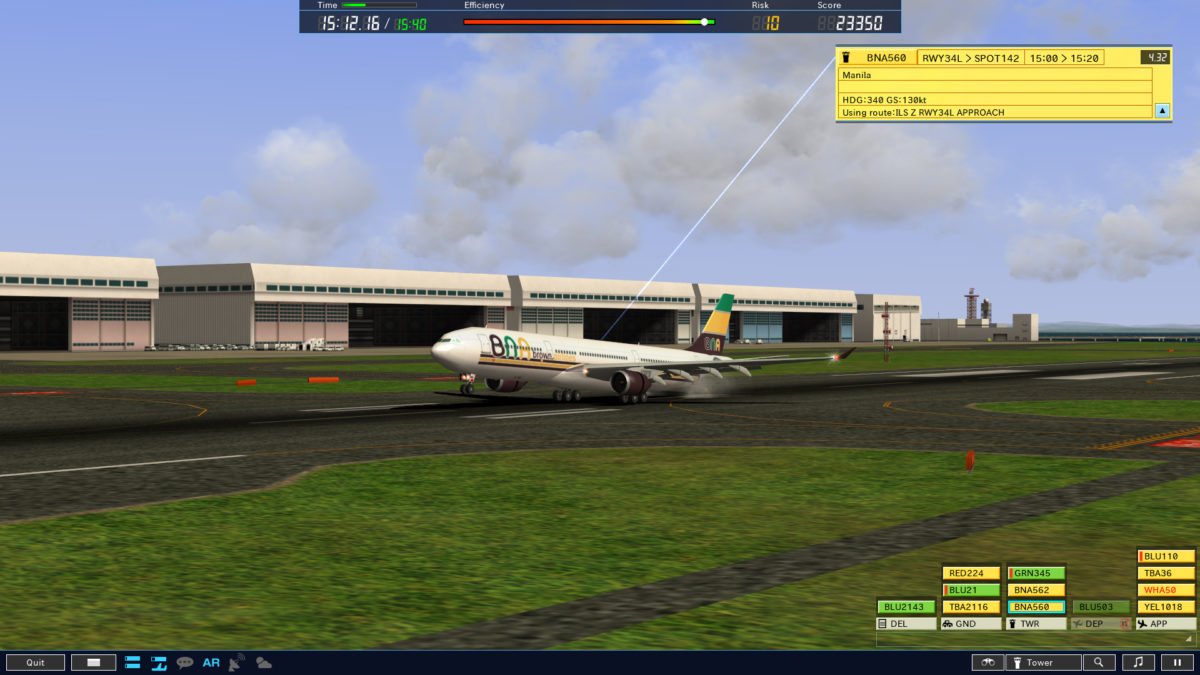I AM AN AIR TRAFFIC CONTROLLER 4
TechnoBrain Co., Ltd., $59.99.
Air traffic controllers are like linemen in American football. They are the unsung players on the field without whom no one would go anywhere. I Am an Air Traffic Controller 4 (requires a 64-bit version of Windows 10, 8GB RAM, 3GB hard drive space) offers a glimpse into this demanding job. Although the original IATC debuted in 1998 in Japan, its fourth and most current version recently became licensed for sale in the United States.
IATC4 tasks the player with managing the space around Japan’s largest airport, Tokyo’s Haneda, with other airports available for purchase as add-ons. The players take responsibility for both ground control and tower duties. They’ll determine how to move planes between airstrip and terminal and when to direct airborne aircraft to and from the airport. Departures start at a terminal and need clearance for back-out, taxiing, lift off and handoff to a departure controller. Arriving flights need the corresponding items in reverse.
The game’s mechanics are driven primarily through button clicks as the player chooses from a bank of icons to select an aircraft to communicate with. Communications are likewise driven by a button click on a set of choices; for example, between authorizing or postponing a landing. This type of communication makes up most of the game’s activity. While it seems simple, a game session can become frantic when numerous aircraft wait for direction.
The software’s substantial age yields both pros and cons. The mature code base runs stably and a three-dimensional Haneda is full of rich details, including vehicle traffic, radio calls, current and correct aircraft types and weather and time of day effects that create an active environment. All these aspects have likely benefitted from years of curing. The graphics though, while certainly functional, still have a dated feel, especially considering the standard of Microsoft Flight Simulator’s latest version. Other quirks in IATC4 seem like things that should have been long overcome. Weak documentation and heavily accented radio calls make the game harder to learn and understand. More concerning is the inability to trigger a click to send a communication while a current radio call is completing, a frustration in a game that scores the player on promptness of communicating orders.
Several of the game’s limitations compromise player efficiency. Issued directives cannot be rescinded. The inability to tell an aircraft to follow another to a runway or put airborne aircraft in a holding pattern leads to redundant micromanagement. The ground traffic panel makes it easy to choose an aircraft’s taxi path but lacks visibility to existing traffic so it’s also easy to authorize a taxi and be surprised moments later when a ground collision ends the game.
Nonetheless, IATC4 has enough realism and action that fans of air traffic control and airport operations will find the game entertaining and educational. Continued improvement and evolution can help it deliver a more manageable and more realistic experience.






